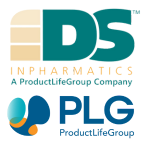The oldest consumer protection organization in the US is the Food and Drug Administration (FDA). In 1906, the FDA was established to oversee food and drugs. However, up until 1976, there was no monitoring in place for medical devices.
The Food, Drug and Cosmetics (FD&C) Act’s Medical Device Amendments put many of the same types of regulations that previously applied to drugs onto medical devices.

Image Credit: DSI, a PLG Company
A risk classification was established, regulatory pathways were recognized, a regulatory pathway for new investigational devices was revealed, post-market requirements were put in place, and registration requirements for the establishment and a device listing were created.
Medical device manufacturers were now required to provide a reasonable assurance of safety and efficacy. Devices that did not adhere to the rules could be banned by the FDA.
Finally, in 1982, the FDA established The Center for Devices and Radiological Health (CDRH) as a separate division with the exclusive purpose of regulating and supervising medical devices.
Medical devices are now regulated
Medical advancements have been saving lives for years. Additionally, as new technologies like 3D printing, software, hardware, and algorithms are incorporated into device designs, medical devices are rapidly evolving.
Bandages and thermometers are no longer the only types of medical devices available. New medical devices are complex systems designed to assist patients with a wide range of issues, and, frequently, they both extend and save lives.
There are leadless pacemakers that use hardware, software, and Bluetooth technology, 3D printed spinal implants, implants that let the blind see, heart pumps that can be carried about in a bag, and implants that can keep a person alive until a transplant is available. New technologies are always being put up for review.
These varied and constantly-evolving lists of medical devices are categorized by risk by the FDA in the United States. Different regulatory approaches are needed for FDA Class 1, Class 2, and Class 3 devices for them to be commercialized and put on the market.
The approval to market granted by the FDA is based on the device’s efficacy and safety and reasonable proof that the benefits of the device outweigh any risks or side effects.
Every device’s regulatory process is distinct, just like every device is. Classifications are centered on risk, regulations are based on product codes, consensus standards are recognized for devices, and targeted advice publications are based on FDA lessons learned and new information that frequently emerges after a period of device usage.
Based on risk class, various submissions and criteria exist. For instance, compared to a pacemaker or an AI system, a surgical suture has distinct submission criteria, instructions, and standards. Numerous other accepted consensus standards are also available, and they are applicable to a wide range of devices. Sterilization guidelines are one instance of this.
No matter what kind of equipment the user has, whether it is delivered sterile or sterilized on-site, the appropriate sterilization requirements must be followed. To ensure that proper testing and validation can be performed once, correctly, it is important for a Regulatory professional to be able to identify all standards applicable to a device as early as possible in the design process.
An undesirable regulatory path
The COVID-19 pandemic prompted the Health and Human Services (HHS) Department to proclaim a state of emergency in the US on February 4th, 2020. This designation is important because it allowed the USA to use the Emergency Use Authorization (EUA) that has been in place since 2009 and was previously utilized during the H1N1 outbreak.
To obtain expanded indications of the drug Tamaflu for broader use to combat H1N1 in 2009, the EUA was used. In the instance of COVID-19, the EUA was permitted to contain all of the biologics, drugs, and medical equipment that would be required to combat the pandemic.
As long as the device’s indications were not altered, any legitimate manufacturer who previously possessed a market approval given by the FDA could increase manufacturing and advertise/distribute their product during the pandemic (or at any other time). For instance, the FDA has authorized the sale of surgical face masks since 1977.
For “normal” clearance, a Class 2 device like a surgical mask has to submit a 510(k) application. Three recognized consensus standards need to be met before this device can then be approved by the FDA in order for it to be marketed as a MEDICAL DEVICE.
These standards outline a test method that must be followed, a materials performance standard, and a test method for evaluating bacterial filtration efficacy. If a manufacturer has an approved 510(k), they can start to distribute items immediately.
However, there was a larger demand for several items, including personal protective equipment (PPE), during the COVID-19 epidemic. PPE for medical professionals was severely lacking, which was essential for their wellbeing when caring for COVID-19 patients.
Even with all of the already approved devices being sold, there was not enough of what was needed at the time. Therefore, the EUA had to be utilized.
The difference between “normal” market approval and EUA approval
The legal manufacturer is required to compose a whole submission, including filling out all applicable FDA forms and specified sections, for a “normal” submission (i.e., 510k). Once compiled and fees paid, the submission could be saved onto a USB, validated, and sent over to the FDA for a 90-day review. If there are concerns about the information provided, approval can take longer than 90 days.
The FDA developed templates for medical device EUA submissions to make sure that they were receiving data that would allow them to evaluate safety and effectiveness. If the requirements and criteria were satisfied, this application could be sent via email to a specialized team of reviewers, who would then examine it and approve it within a few weeks.
For masks and other medical equipment, the legal manufacturer was still required to demonstrate compliance with the FDA-recognized consensus criteria.
Again, using surgical masks as an example, the first EUA certification for these devices was given on August 8th, 2020. For surgical masks, a total of 50 manufacturers filed EUAs, with the most recent EUA clearance being given on March 4th, 2022.
By limiting the submission to exactly what was required to support safety and effectiveness and having a specialized review team, the EUA helped guarantee that the required number of surgical masks are available without sacrificing either safety or efficacy. The requirements of the relevant standards and recommendations still apply to new producers.
What happens next
In the United States, the emergency designation will still be in place until the HHS formally states it is over. If a company fulfills the safety and effectiveness conditions, it can get EUA clearance at any time before the emergency is announced as over.
Any manufacturer whose product was certified under the EUA system but did not proceed with a “normal” 510k submission and approval will have to take their product off the market when the emergency is over.
After the emergency is declared over, manufacturers that acquired EUA permission and then wrote a 510k application in accordance with FDA guidance papers and submitted it for evaluation and approval to market will be permitted to continue selling their product.
Conclusion
Nothing is perfect, and no one could have foreseen the pandemic before it arrived. However, people in the United States have been incredibly fortunate. Many countries lacked a framework to handle the increased demand for these goods or to guarantee the quality of the devices.
Moreover, many countries lacked the regulatory experts necessary to develop and submit EUAs, interpret the rules, and handle other “normal” device approvals unrelated to pandemics. Regulatory experts have been so active during this period of uncertainty.
The pandemic is hopefully coming to an end, and we may not have to repeat this process again in the near future. However, the fact that this can be accomplished once again is promising.
About DS InPharmatics 
DS InPharmatics (DSI) provides regulatory, technical, and project management consulting services to healthcare product companies that manufacture and/or market pharmaceuticals, biopharmaceuticals, and cellular and gene therapy products.
Since 2007 we have provided our clients with innovative strategies and exceptional quality work products intended to enhance product development, approval, and marketing presence. Whether advocating CMC strategy, directing CMC operations or developing CMC submission content that represent the best interests of emerging biotech, we focus on the critical CMC issues and build programs that enhance development.
In April 2021 we were thrilled to announce that DSI has just become part of ProductLife Group.
French-headquartered ProductLife Group (PLG) is well-known in the Life Sciences market. It has a track record of successfully managing global outsourcing programs and insourcing services for its international client base. The company is on a mission to help transform human health outcomes by optimizing regulatory affairs, safety & vigilance, and quality compliance for life sciences organizations worldwide.
The fit between our two organizations could not be more perfect. We will complement PLG's growing biotech services portfolio. US biotech sponsors recognize DSI as a leader in consulting for go-to-market strategies and RA pre-market consulting. At the same time, PLG has a strong reputation for managing end-to-end outsourcing of regulatory affairs and pharmacovigilance activities worldwide.
Our merger with PLG will harness our combined strengths, offering our clients on both sides of the Atlantic support with their developed drugs approvals and post-approvals compliance, plus advisory services on the best market strategies to deliver a rapid ROI on their development. Together we will offer our clients increased pharmacovigilance capabilities - including a QPPV; pharmacovigilance consulting; and a fully validated safety database - as well as complementary toxicology-related services; RIM/electronic document management services; and support for medical device regulatory requirements.
We see enormous potential in this new chapter for DSI and you, our clients. As a PLG company, we have the opportunity to become part of a global force in life sciences regulatory and compliance solutions and services, and we're incredibly excited to add our momentum to that effort.
Sponsored Content Policy: News-Medical.net publishes articles and related content that may be derived from sources where we have existing commercial relationships, provided such content adds value to the core editorial ethos of News-Medical.Net which is to educate and inform site visitors interested in medical research, science, medical devices and treatments.